I am a deeply practical woman in most areas of my life, but sewing thread just isn’t one of them. When it comes to beautiful thread ends and bits of leftover embroidery floss, I simply can’t bring myself to throw them away. Instead, into the giant glass jar they go, destined to look pretty while uselessly cluttering up my craft studio until the collapse of all space and time as we know it. Because, those colors!
Sound familiar, stitchers? Well, put down those thimbles and hoops, set aside your needles and spools, and get ready to turn those lovely leftovers into super-cute resin sewing thread and embroidery floss pendants! Make them for your friends! For your sewing circle or quilt guild! For the gal who cuts the yardage at your favorite fabric shop! Heck, if you’ve got as many floss and thread-filled jars on your shelves as I do, you might want to make one to match every conceivable outfit in your closet! ;)
SAFETY NOTE:
Using casting resin isn’t just making, it’s SCIENCE. Mixing resin and hardening agents together causes a chemical reaction, and this reaction can be dangerous. (We’re not talkin’ Mod Podge, my friends. This is the real deal.) Whenever you work with resin, make sure you do so in a well ventilated area that’s away from pets and kids, and be sure to follow the instructions on the package to the letter. Wear gloves. Wear a mask and eye protection if you need to. Be smart and be safe.
Please note that the links to supplies and tools that are provided below are affiliate links, and I will be compensated if you choose to make a purchase after clicking through.
Supplies:
* Epoxy resin, clear formula for crafting or jewelry-making
* Mold release and conditioner
* 10mm jump ring, one for each pendant
* 18" necklace chain with clasp
* Colorful thread or embroidery floss scraps
* Small glass-head straight pins (optional)
Tools:
* Pendant resin jewelry mold
* Resin mixing cups, stir sticks, and brushes set
* Round nose jewelry pliers
* Nail file with shine and buff surfaces or ultra-fine sandpaper
*Kraft paper or newspaper to protect your worktable
*Masking tape
* Extra straight pin or toothpick to position the items in the resin
Step 1:
Cover your workspace with kraft paper or newspaper to protect the surface from spills.
Step 2:
Apply mold release spray to your molds per package instructions and allow it to dry completely.
Step 3:
Gather sewing thread or embroidery floss scraps and glass-head straight pins in your favorite colors.
Keep in mind that sewing thread is thin, and using it will result in a subtle design. For bolder designs, use embroidery floss.
Note: If you’re worried that an item that you’re planning to embed in resin will leach color or release air bubbles once submerged, you can seal it in advance with Mod Podge or a spray acrylic. If you seal your thread/floss in advance, make sure you arrange it in the shape that you want it to be in the pendant, as you won’t be able to reposition it once it has been sealed.
Step 4:
Once your thread/floss scraps are ready and the mold has been conditioned, mix the resin with the hardener EXACTLY according to the instructions on the package.
Alas, there is zero room for error here. If you aren’t precise in your ratios and mixing, your resin won’t set and harden, and there won’t be anything you can do to fix it.
SAFETY NOTE: (Shared at the beginning of this post, but it bears repeating.)
Using casting resin isn’t just making, it’s SCIENCE. Mixing resin and hardening agents together causes a chemical reaction, and this reaction can be dangerous. (We’re not talkin’ Mod Podge, my friends. This is the real deal.) Whenever you work with resin, make sure you do so in a well ventilated area that’s away from pets and kids, and be sure to follow the instructions on the package to the letter. Wear gloves. Wear a mask and eye protection if you need to. Be smart and be safe.
Step 5:
When the resin has been thoroughly mixed, carefully pour it into the mold, leaving a tiny bit of room (a couple of mm or so will do) before you reach the top. Next, place the items that you wish to embed on top of the resin that you’ve just poured and use a straight pin, toothpick, or small stir stick to gently position the items and push them down into the resin so that they’re completely submerged. When you’re satisfied, use a wooden stir stick to slowly add additional drops of resin on top until you’ve finished filling the mold. Do not overflow the mold.
All items should now be completely encased in the resin.
Note: I used EasyCast resin, which is relatively slow to set, so I had plenty of time to position my items. But, some resins can begin to set in minutes, so if you’re using a different kind of non-UV resin (UV doesn’t usually work well with embedded items), make sure you read the instructions in full so you know how quickly you’ll need to work.
Step 6:
Set the mold aside in a flat, dry place to cure, keeping it away from dust/kids/pets.
Keep in mind that a full hard cure can take up to 48 hours—or longer if the weather is humid—so make sure you check your resin package for curing times.
Step 7:
Release your cured pendants by pressing gently on the back of the mold. Fully cured items should separate from the mold and pop out easily.
Step 8:
Carefully remove any rough/sharp spots along the edges with the smooth and shine surfaces of a nail file.
At this point, if you notice any dull or cloudy spots on your pendants, you can use a brush to apply a second layer of resin to the surface to restore the glossy shine. But, keep in mind that, if you add an additional layer of resin, you’ll also need to allow the pendants to cure again for the FULL hard curing time.
Step 9:
To finish your necklace, use round nose pliers to secure a jump ring through the center hole of the pendant, then place the pendant on a necklace chain.
Step 10:
Wear your awesome new necklace(s) and feel the sewing love!
Full disclosure: I’m totally in love with the straight pin pendant. (Shhh! Don’t tell the red thread pendant!) It’s definitely going to be the star of this season’s handmade jewelry rotation!
What will you put in yours?

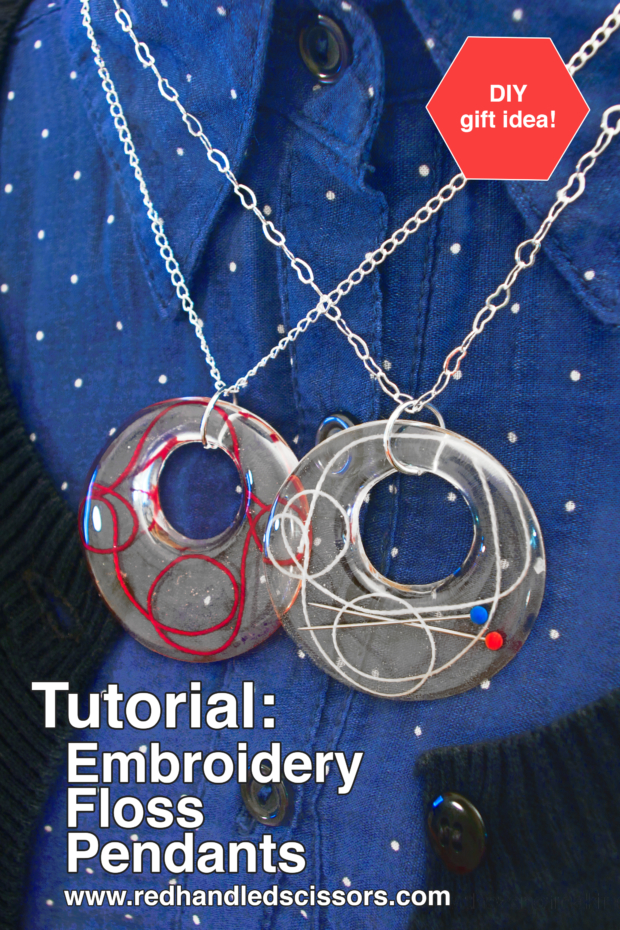
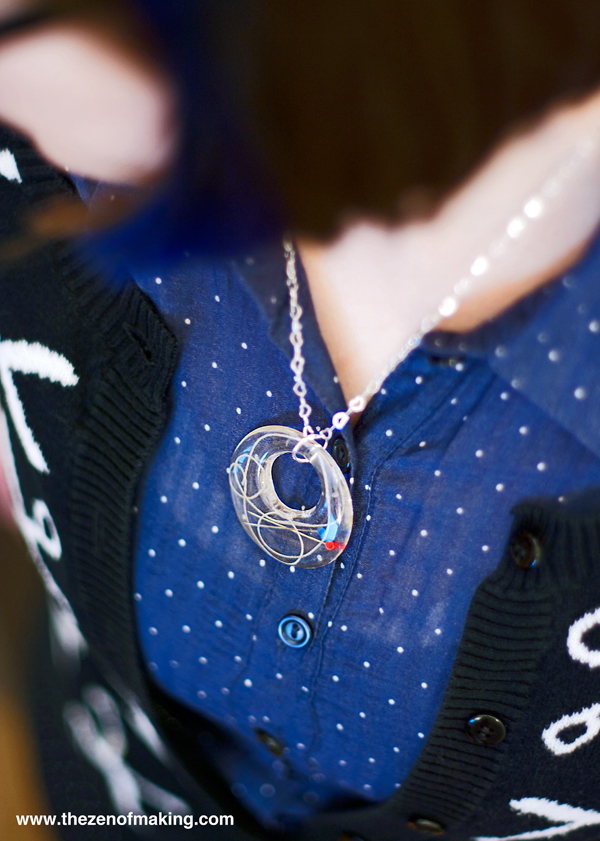
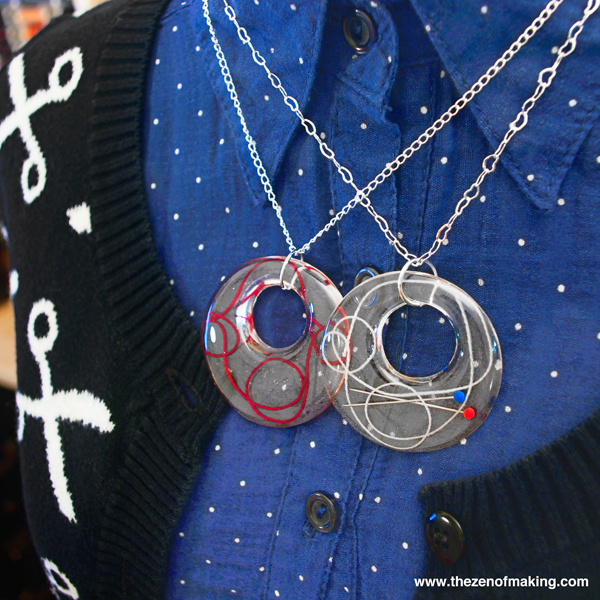
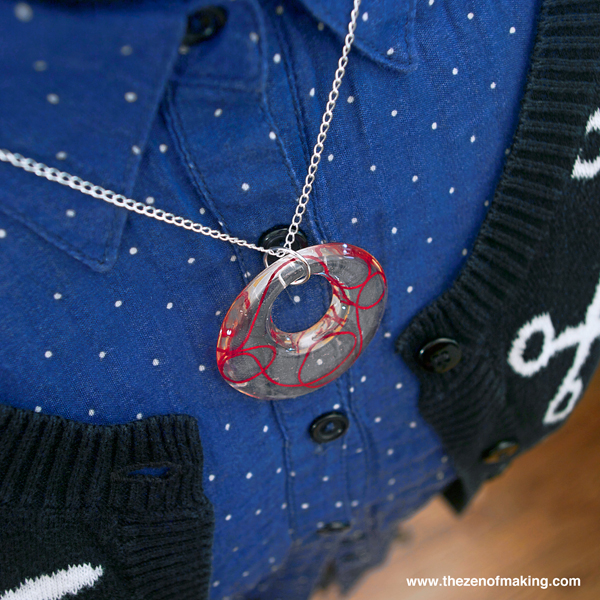
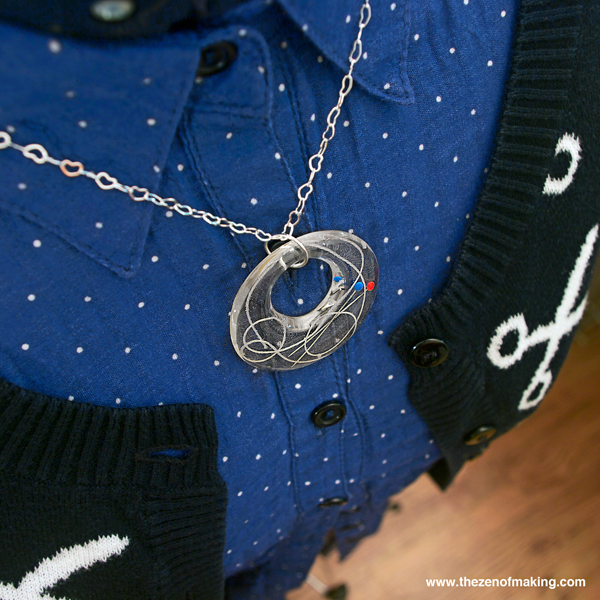
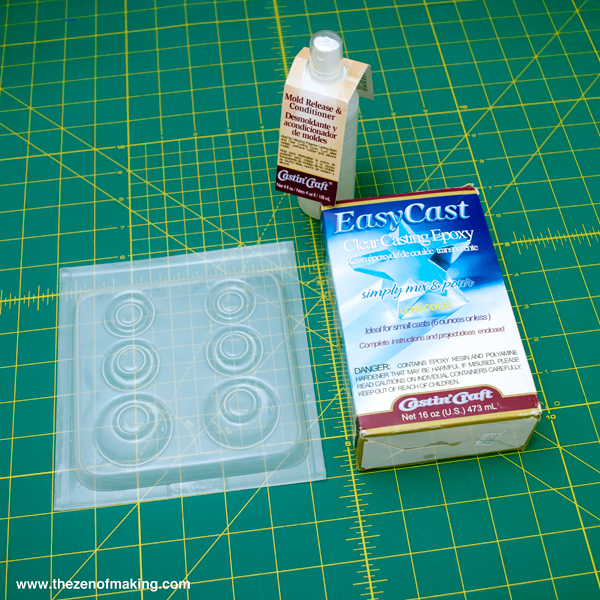
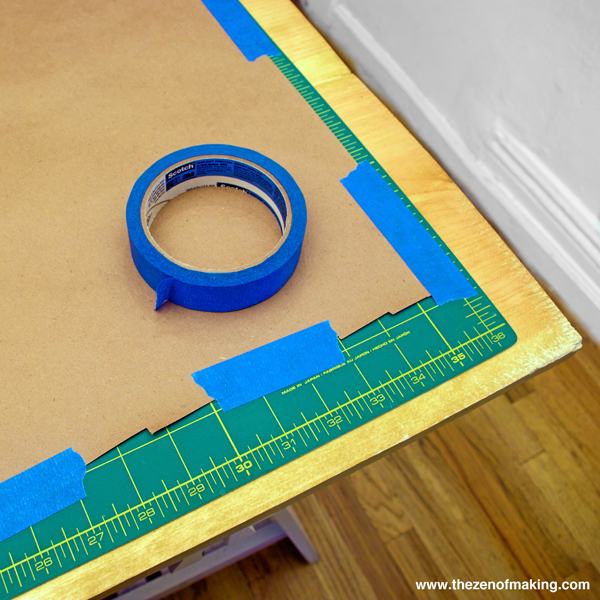
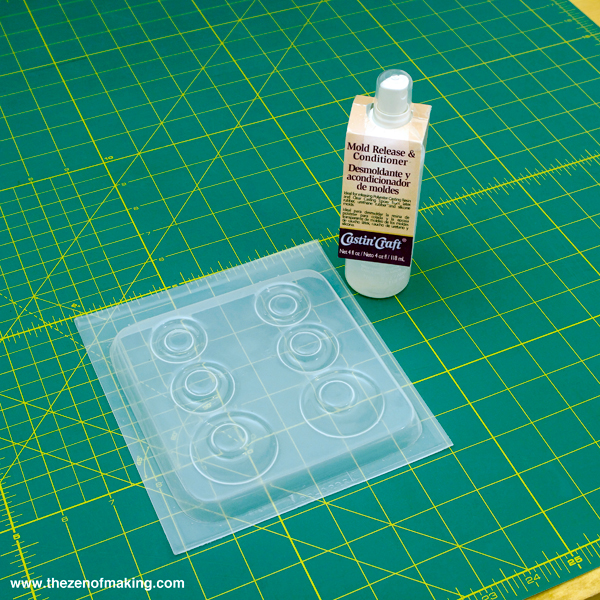
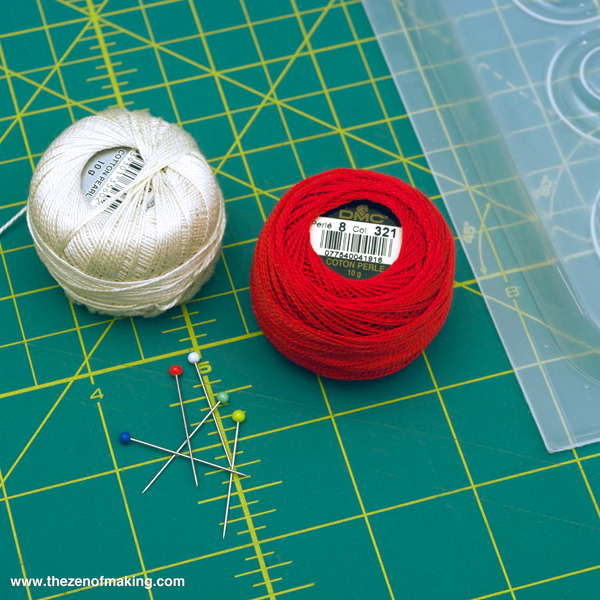
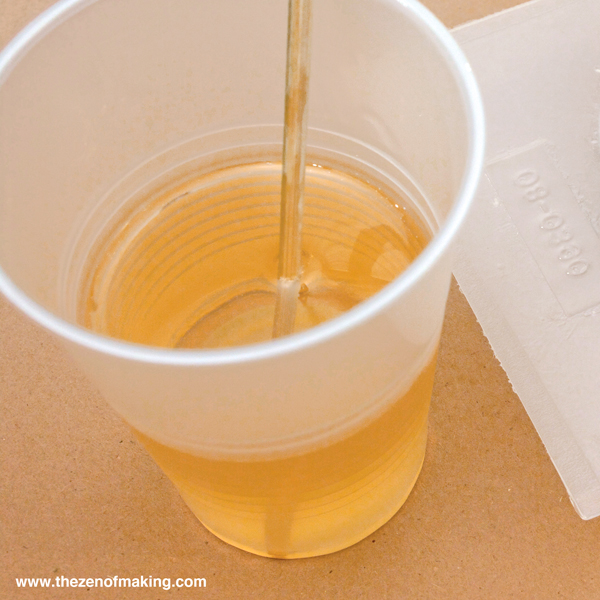
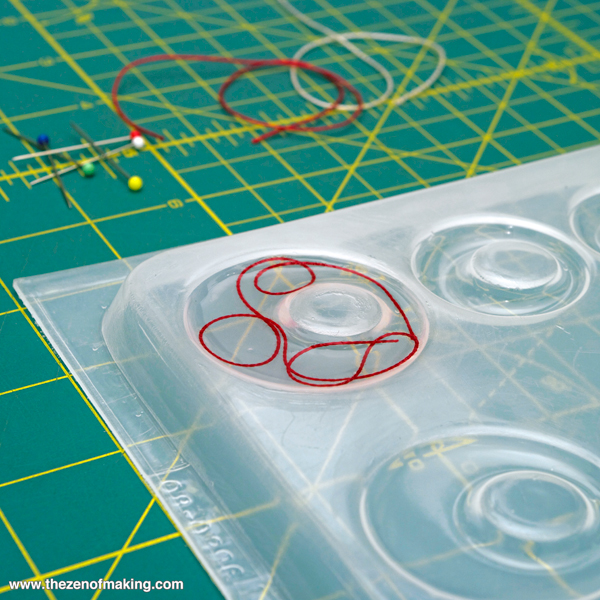
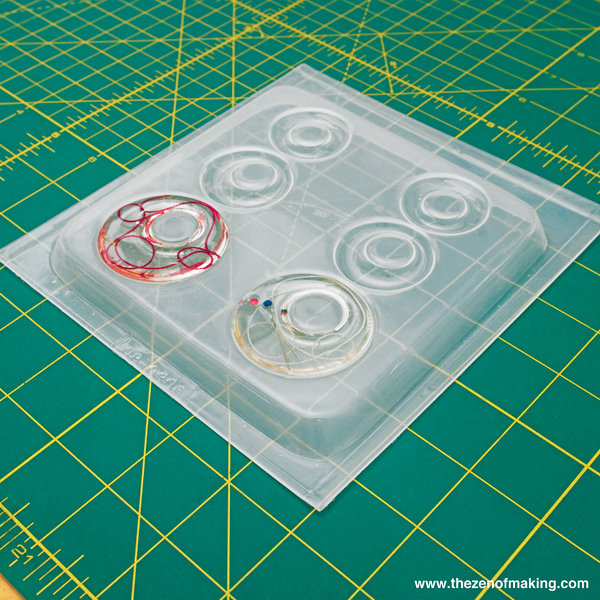
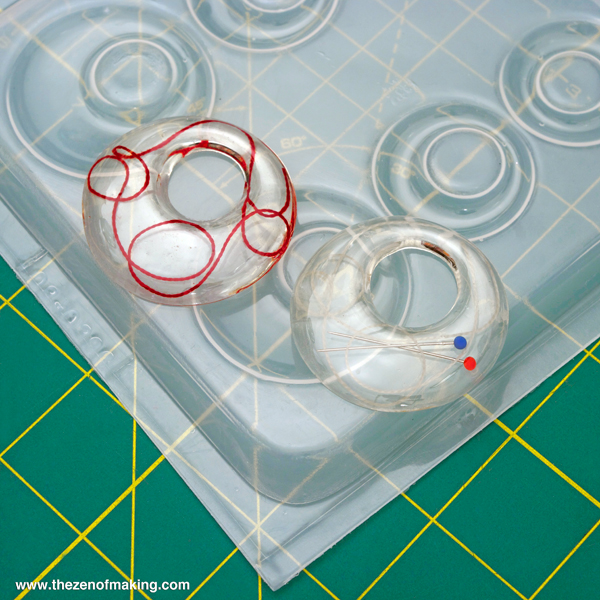
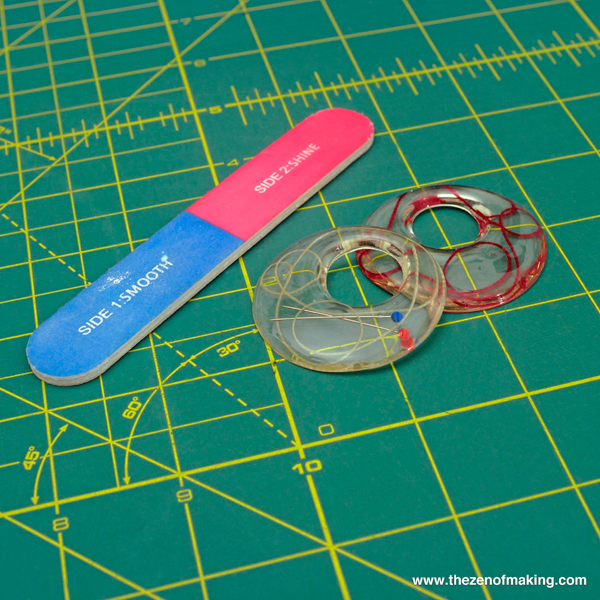
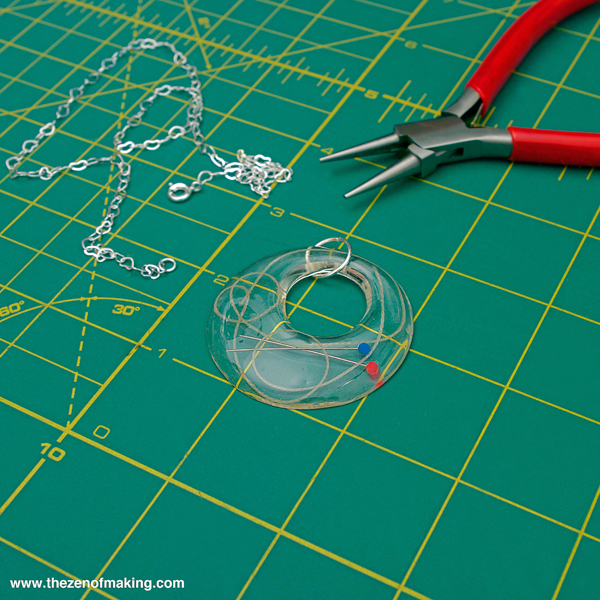
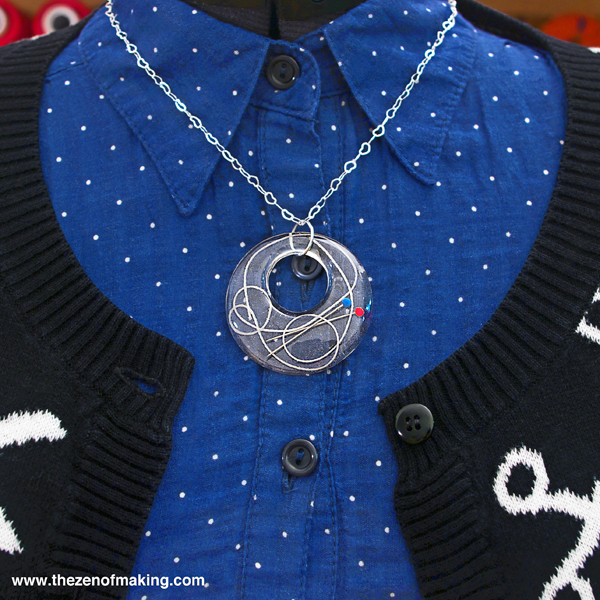
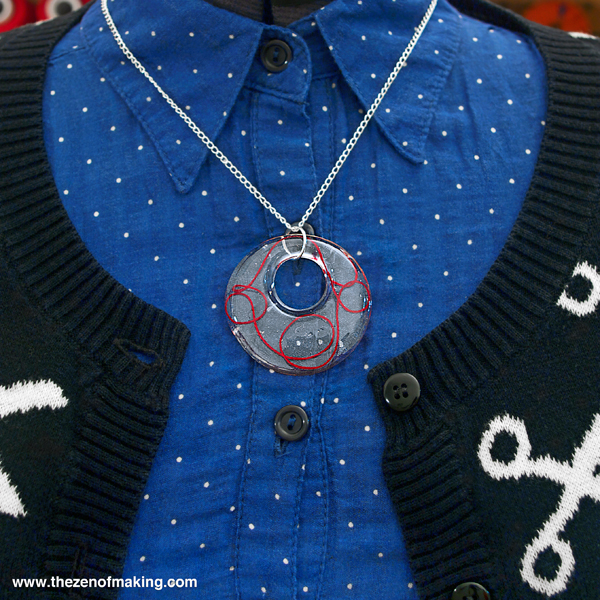
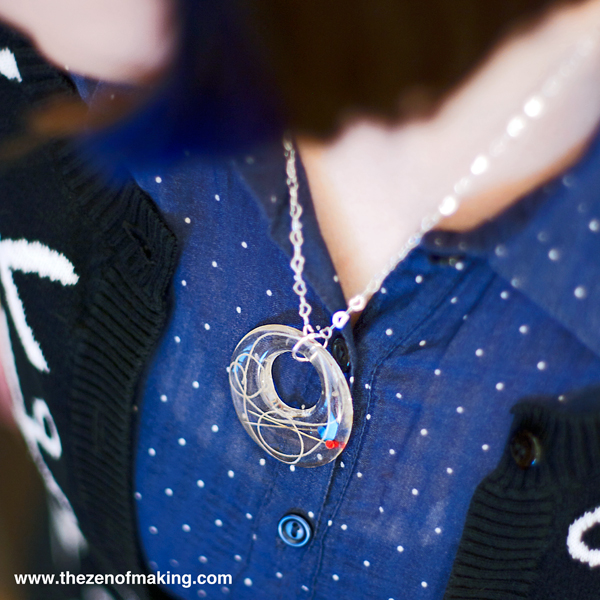
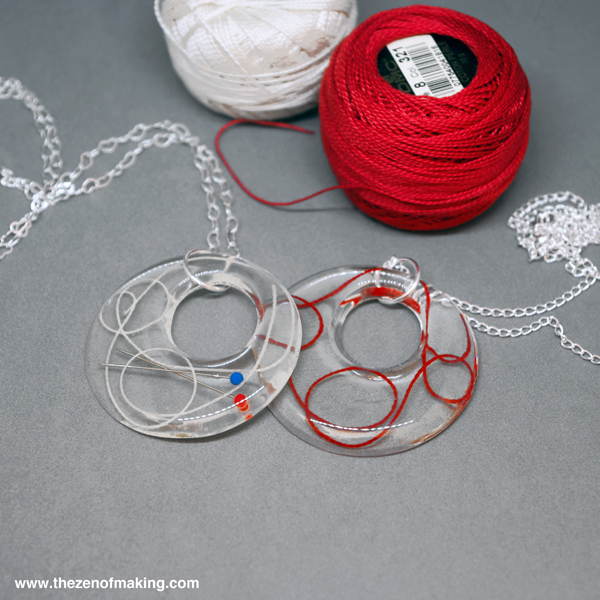
OMG, Girl – these are so beautiful and awesome. Best use of resin I’ve seen yet! Love how the floss retained all those elegant loops in the resin. You are a genius-lady!
Thank you! I’ve had this project kicking around inside my head for so long, and I’m so excited that now it actually exists!
wow haley, these are really gorgeous and creative!!! like abstract line art floating in space, yet tells the story of sewing love! hmmm, so-in-love! =)
Thanks for sharing this tutorial-as much as I like it, I have to say that I absolutely LOVE the cardigan you (or a model) are wearing! It’s fabulous!
Just got some feather moulds so looking forward to this project thank you